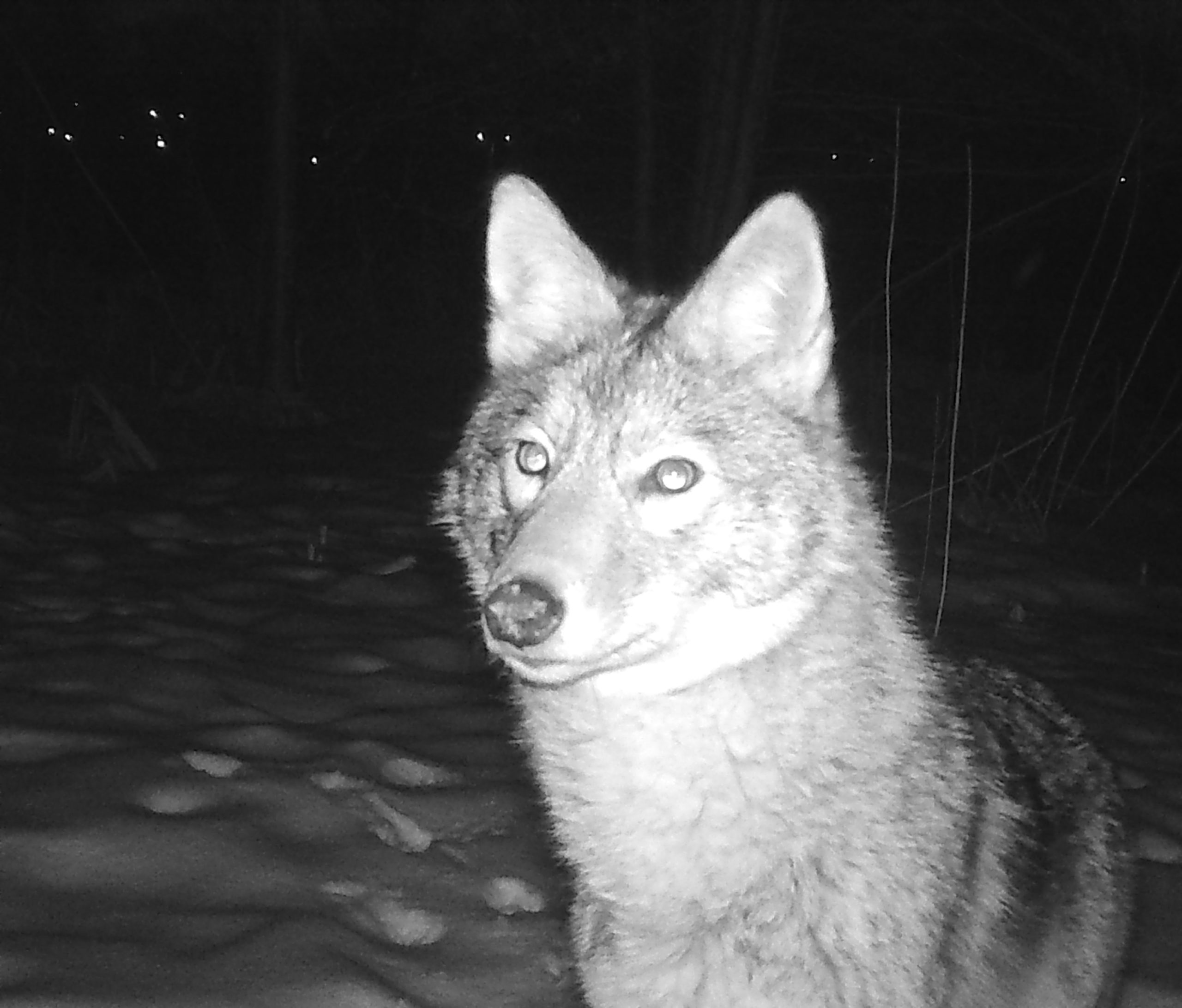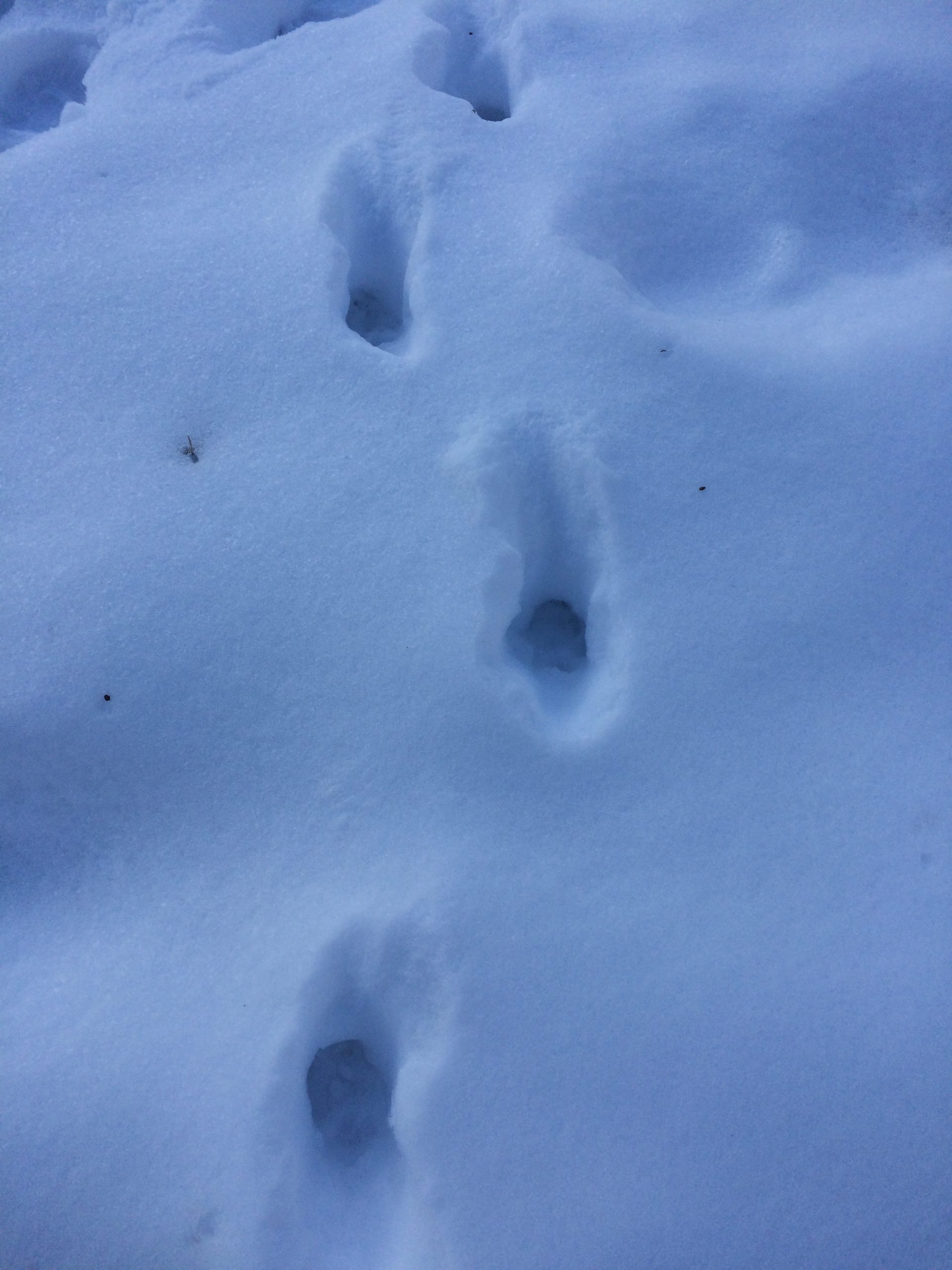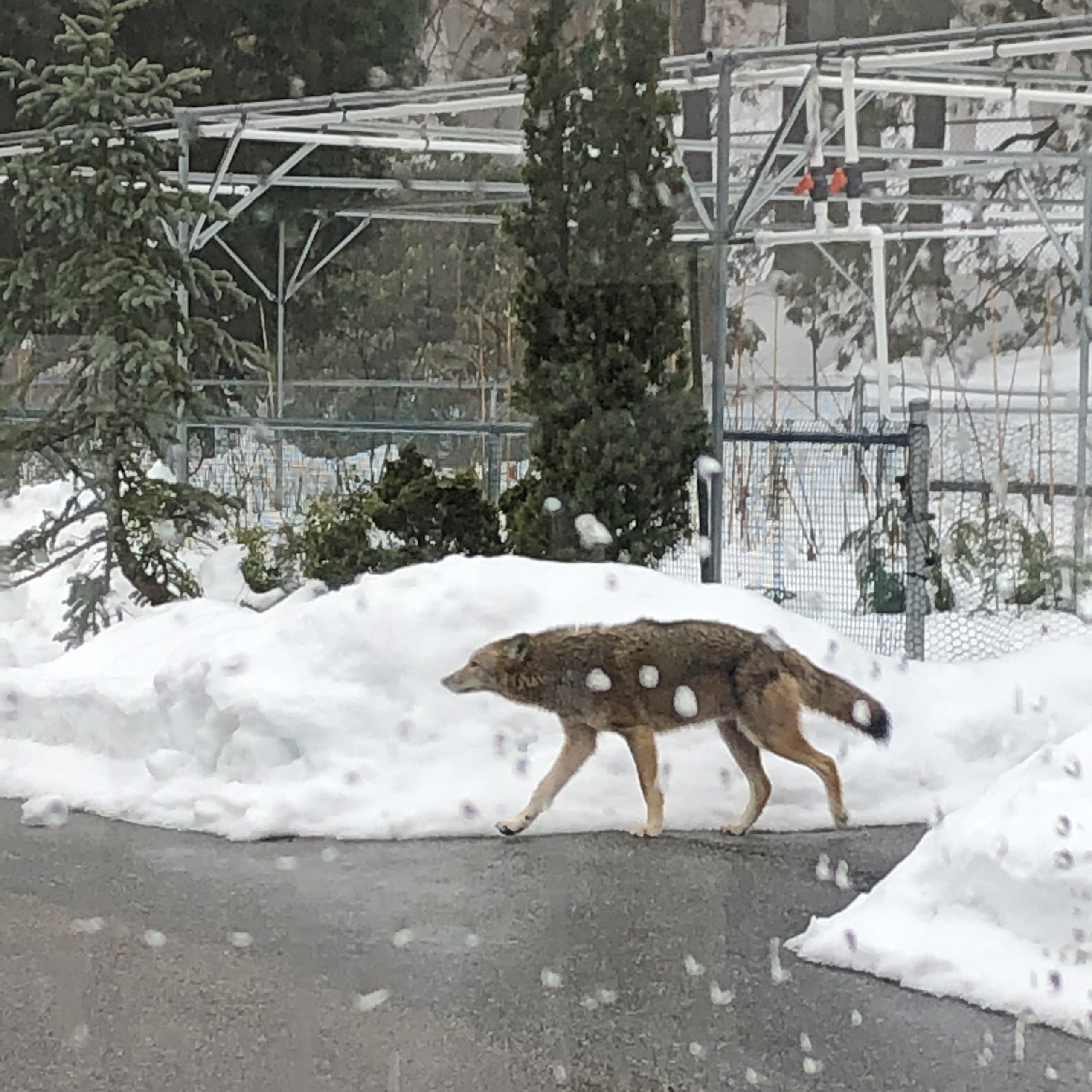
Eastern coyote sightings in Boston parks and neighborhoods often make news headlines during the winter. Although predominantly nocturnal, several factors incentivize winter daytime activity and thus increase potential interactions with Bostonians. Sightings at the Arboretum spike around this time of year, a fact more worthy of visitor awareness than alarm. As always, we work with Boston Animal Control to ensure the safety of both people and wildlife in our landscape.
Winter Roaming
Although coyote sightings in Boston may seem odd, this species proves extraordinarily adaptable and is quite common in urban areas. Parks, yards, and abandoned lots offer suitable alternatives to the mixed habitat they inhabit in more “natural” settings. These urban environments provide a steady mix of mice, voles, rats, rabbits, fruits, seeds, garbage, and stray or outdoor cats. This diverse diet serves an important ecological role at the Arboretum and wherever else they roam. Among other things, coyotes help control rodent and rabbit populations that, if left unregulated, would harm our herbaceous and woody plants.
During most of the year, coyotes avoid humans as much as possible, hunting primarily at night. However, the combined challenges of hunting in snow, cold nighttime temperatures, and the start of the breeding season increase energy needs. In addition, juvenile male coyotes leave their parents during winter and establish their own territories. They often must venture far from their original homes, further boosting the number of coyotes out and about.
Hungry, restless coyotes supplement normal nocturnal foraging by pursuing more daytime prey such as rabbits and squirrels. Maximizing these food returns requires an expanded hunting area, resulting in roaming behavior less common during the rest of the year. Predictably, daytime hunting and roaming boosts the likelihood that visitors may see them in the Arboretum landscape.

Interacting Safely
Coyotes seen in winter may appear larger due to their seasonally thick, fluffy coats. Despite an imposing presence, coyotes are shy, rarely show aggression towards people, and much prefer avoiding confrontation when possible. That said, do not approach a coyote if you encounter one. If you feel threatened, raise your voice, raise your arms, and do not run.
Generally speaking, coyotes react ambivalently towards dogs. Depending on the size of the pet, they may view them as either potential meals or potential competitors. As a result, coyotes have been observed both chasing and fleeing from off-leash dogs. These situations illustrate the critical importance of observing state and municipal leash laws in public areas like the Arboretum. On the other hand, urban cats are common coyote prey. At a minimum, pet owners should consider keeping cats indoors at night for their own protection.
Safety issues can arise when a coyote becomes habituated to human interaction. This can occur when people intentionally feed coyotes or otherwise attempt to befriend or tame them. Habituated coyotes react boldly to humans, approaching or following people and their pets, and do not back away when threatened. If a coyote follows you and does not run when yelled at, call the Arboretum Ambassador at 857.268.3185. They will work with Boston Animal Control to assess the need for further action.

Whose habitat?
The Arnold Arboretum landscape provides important habitat for a variety of urban organisms, an ecological system in which coyotes play a longstanding role. If you see a coyote this winter, stay calm. Assess whether it is actually a threat or just a fellow visitor. Call our Ambassador if needed, but otherwise respectfully enjoy a passing interaction with another urban dweller. Chances are the coyote will turn and trot away after being noticed. Consider that coyotes prefer an inverse of our own city preferences. In their world, Boston is their habitat and urban humans are best left unseen.